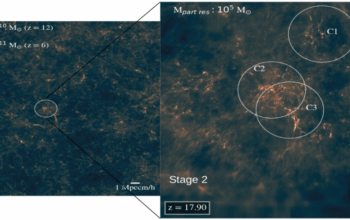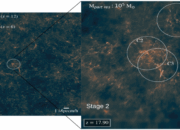The advent of optical fibres has revolutionized communications, enabling high-speed data transmission over vast distances. However, an intriguing paradigm shift is emerging: the notion of incorporating disorder into optical fibre design, which may enhance image transmission capabilities. This exploration invites reflection on how controlled imperfections, or chaos, can serve as a crucible for innovation in optical technology.
Optical fibres fundamentally operate on the principle of total internal reflection. Light propagates through the glass medium, reflecting internally without loss. Historically, the focus has predominantly rested upon maximizing uniformity, aiming for an idealised state of photonic delivery. Yet, recent scholarly dialogue highlights the inefficacies of absolute order, contending that a certain degree of disorder, paradoxically, may yield sharper images and more efficient data throughput.
The quintessential problem with conventional fibres lies in their inherent limitations concerning light confinement. When data-rich images traverse these media, phenomena such as scattering and dispersion can dilute signal integrity, resulting in distorted outputs. Optimising core designs to achieve maximal homogeneity often neglects the untapped potential of perturbations. By integrating variability tactically within the fibre structure, it becomes feasible to exploit the unique properties of light across disordered pathways.
Disordered optical fibres, termed “random media”, introduce a fascinating intersection of physics and engineering. These structures can scatter light in unpredictable yet advantageous ways. Notable research indicates that, under certain conditions, disordered environments facilitate the concentration and manipulation of light beams. This phenomenon is known as “Anderson localization”, which refers to the tendency of waves to become localized in disordered systems. When applied to optical fibres, this property engenders the possibility of sharper image or signal transmission by confining lights to specific regions within the fibre.
Crucially, such implementations rely heavily on the understanding of wavefront shaping. By harnessing algorithms to characterise and adjust these disordered states, researchers can design optical systems that compensate for irregularities. This approach not only fosters the integrity of transmitted images but also empowers multimodal functionalities. For instance, by twisting or altering the refractive index within the fibre, one can dynamically control the focus and intensity of light, repositioning the boundaries of traditional imaging interfaces.
Recent discoveries in this domain also delve into the quantum aspects of light behaviour. Quantum coherence — the preservation of the phase relationship between different quantum states — can be enhanced through disordered media, propelling advancements in quantum imaging. This paves the way for unprecedented resolutions in imaging systems, something conventional optical fibres struggle to accommodate effectively. Investigating disordered structures thus serves not merely as a theoretical exercise; it has tangible implications for fields as diverse as medicine and astronomy where clarity and detail are paramount.
It is imperative to consider how the simplicity of fibre-optic transmission can mask profound complexities inherent in light propagation. For example, the emergence of “metamaterials” — engineered materials with properties not found in naturally occurring substances — has opened avenues for manipulating light in novel ways within disordered fibres. Metamaterials can bend light in unprecedented angles, contributing to the potential minimization of aberrations and enhancing overall image quality through engineered imperfections.
Furthermore, the integration of disordered optical fibres may revolutionize end-user applications from healthcare diagnostics to virtual reality. In the medical field, enhanced imaging modalities could drastically improve the diagnostic capabilities of endoscopic procedures, enabling clinicians to visualize intricate internal structures with remarkable clarity. In the realm of virtual and augmented reality, sharper images through disordered media may allow for a more immersive experience, redefining interface design and user interaction.
Despite the promising prospects, challenges remain that necessitate thorough scrutiny. The introduction of intentional disorder into optical fibres must be carefully calibrated to prevent excessive scattering that could impair signal transmission. Engineering the appropriate balance between disorder and coherence is critical, embodying a paradox where unpredictability can lead to enhanced control. Ongoing research is essential to navigate these intricacies, calling upon interdisciplinary collaboration across physics, materials science, and optical engineering.
As we venture further into an era defined by rapid technological advancements, the compelling notion that “sharper images can emerge from disorder” becomes increasingly relevant. The trajectory of optical fibres may soon pivot to embrace these complexities, fostering innovations that bridge the conventional with the extraordinary. By reframing our approach to optical design, we set the stage for transformative applications that not only enhance existing technologies but inspire future discoveries.
In conclusion, the exploration of disordered optical fibres is emblematic of a broader philosophical inquiry regarding order and chaos in technology. Coherent light in an incoherent medium propels us to reconsider the foundational principles of optics. As the canvas of optical design expands, the confluence of science and artistry reminds us that in the dance between chaos and clarity, profound breakthroughs await.











